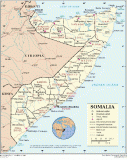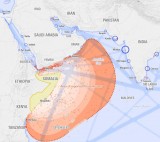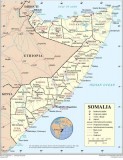List of author's articles

The development of Somalia after 1990: 1. Introduction

The development of Somalia after 1990: 2. Failed states

The development of Somalia after 1990: 3. Political developments preceding the collapse of the Somali republic

The development of Somalia after 1990: 4. Post-intervention development of Somalia and attempts to restore the state

The development of Somalia after 1990: 5. The problem of modern piracy in Somalia

The development of Somalia after 1990: 6. Conclusion

The development of Somalia after 1990: a list of abbreviations used

The development of Somalia after 1990: a list of proper nouns and names

The development of Somalia after 1990: Content

The development of Somalia after 1990: Maps

The development of Somalia after 1990: The sources used

The problem of piracy in Somalia Part 1. - The problem of piracy in Somalia
The phenomenon of Somali piracy in recent years is receiving considerable attention in the world media. In its essence, it is a phenomenon truly unprecedented. I consider as unique the method of its solution on the international level, and ultimately the foreign policy role of the European Union as a leading actor of the current global crisis management. Let's zoom in now to the problem of Somali piracy in context.

The problem of piracy in Somalia Part 2. - The European Union and the solution to Somali piracy

The problem of piracy in Somalia Part 3. - International legal context of maritime piracy

The problem of piracy in Somalia Part 4. - Resources and annexes
Join us
We believe that there are people with different interests and experiences who could contribute their knowledge and ideas. If you love military history and have experience in historical research, writing articles, editing text, moderating, creating images, graphics or videos, or simply have a desire to contribute to our unique system, you can join us and help us create content that will be interesting and beneficial to other readers.
Find out more